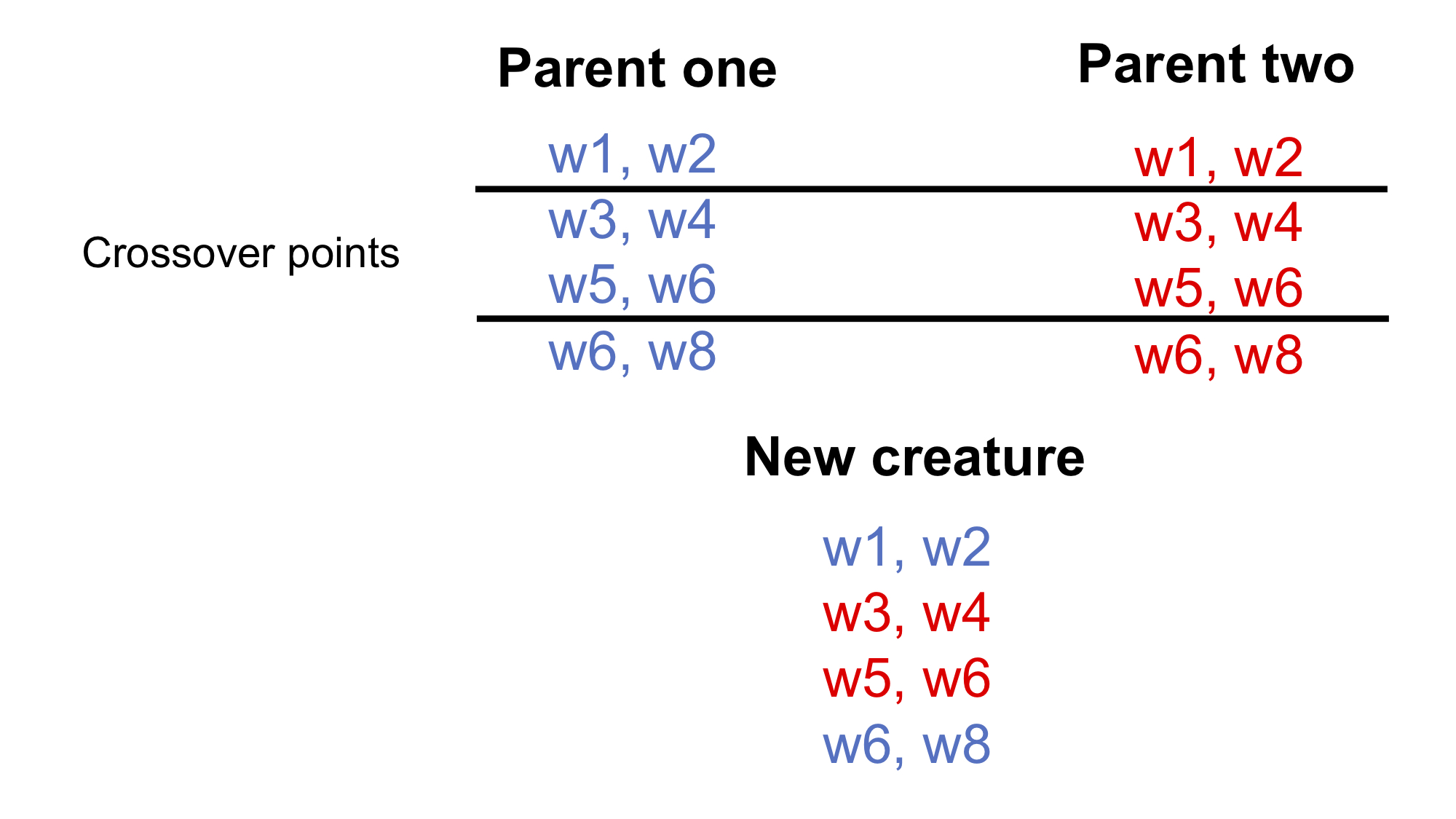Hi. I've been diving into the details of the simulator and neural networks, and I am trying to understand the mechanics of chromosomes.
My assumption is that the chromosome for one creature encodes all of the weights in the neural network at the end of the time interval for that creature. These weights are ultimately what vary between creatures and are what must be passed down from generation to generation.
Is this correct?
In the information section, the chromosome is described as a binary string of numbers, but I am having a hard time understanding how a binary string of numbers corresponds to the multiple weights in a network.
Are the weights organized something like this?
w1, w2
w3, w4
w5, w6
w6, w8
I made a quick image to show one possible way that chromosomes and the two-point crossover might work.
Is this an accurate representation?

OK, thank you very much,
Bruno


